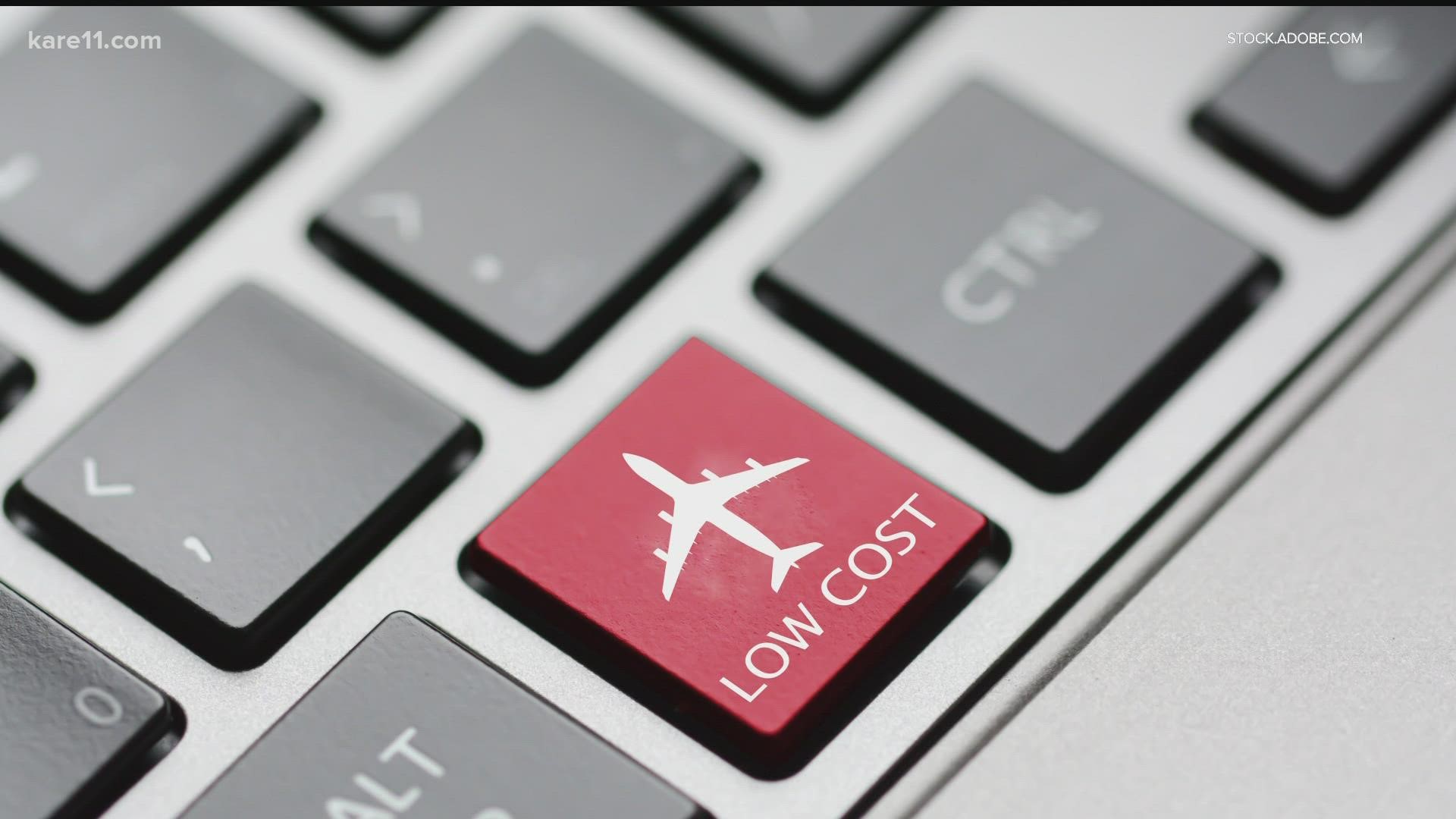MINNEAPOLIS — It's been a long, cold Minnesota winter... seems like ALL of them are... and over the next few weeks fed-up folks will be boarding planes to escape for some place warm.
Yes, Spring Break is upon us and travel experts believe it will be a busy one. With COVID infection rates dropping across the nation (and public restrictions falling by the wayside) flights will be full, and airports busy.
Metropolitan Airports Commission spokesman Pat Hogan says the number of people flying out of MSP from mid-March to early April will be the highest since 2019, with leisure/Spring Break travelers making up the bulk of passengers. He expects the week of March 20 to be the busiest week of Spring Break.
Hogan explains that the biggest backups at security checkpoints come during the early morning hours. Airport officials continue to recommend that travelers arrive 2 hours prior to a domestic flight and 2 ½ hours prior to an international flight.
To make the Spring Break air travel experience as smooth as it can be, the Transportation Security Administration (TSA) is offering ten suggestions to get through screening with the least amount of hassle.
- Continue to wear a face mask. The mask requirement remains in place and TSA will continue to assess the duration of the requirement in consultation with CDC.
- Follow the rule that limits liquids. Gels and aerosols are limited to 3.4 ounces or less in carry-on baggage. There is an exception for hand sanitizer, which has a temporary 12-ounce limit. The general definition for this rule is that if you can spill it, spread it, spray it, pump it or pour it, then the carry-on quantity is limited.
- Pack food in a clear plastic bag. If you plan to travel with food, it is a best practice to pack your food items in a clear plastic bag and place that clear plastic bag into your carry-on bag. When you get to the security checkpoint, remove and place the clear bag containing your food into the bin to reduce the opportunity for cross-contamination between the food and bins.
- Leave prohibited items at home. Be familiar with the TSA prohibited items list for carry-on bags. Travelers can check for prohibited items by using the “What Can I Bring?” page on TSA.gov and by downloading the free MyTSA app, which has a helpful “What Can I Bring?” feature.
- Do not bring a firearm to a security checkpoint. Airline passengers can fly with firearms only in checked baggage. All firearms must be properly packed and declared with your airline at check-in. Contact your airline for additional guidance. Firearms at TSA checkpoints represent an unnecessary risk and an expensive mistake, as you may be subject to a civil penalty.
- Give yourself time. Travel volumes are expected to be higher than they have been in years, and some passengers may be traveling for the first time in quite a while. Staffing challenges may mean extra time is needed for parking, rental car and airline check-in counters, and at checkpoints.
- Empty your pockets when you get to the checkpoint. Place items inside your carry-on bag instead of into a bin to reduce touchpoints and not leave anything behind.
- Listen to TSA officers. They may be providing information on new technologies that help reduce touchpoints and make for a more streamlined and convenient passenger experience.
- Contact TSA with your questions in advance. Tweet your questions and comments to @AskTSA or via Facebook Messenger, weekdays from 8 a.m. to 6 p.m. EST. You can also call the TSA Contact Center at 866-289-9673 from 8 a.m. to 11 p.m. EST or 9 a.m. to 8 p.m. on weekends and holidays.
- Enroll now in TSA PreCheck®. Enrolling in TSA PreCheck allows you to avoid removing shoes, belts, liquids, laptops and light jackets. Most new enrollees receive a Known Traveler Number within five days, and membership lasts for five years.
Watch more on the coronavirus:
Watch the latest reports and updates on the coronavirus pandemic in Minnesota with our YouTube playlist:

